Amazon Competitors in 2024: Top 20 Players to Watch
Are you curious about who stands toe-to-toe with Amazon in 2024? Wondering which Amazon competitors are challenging the e-commerce giant and how they measure up?
In this article, I uncover the top 20 Amazon competitors, diving deep into what makes them formidable rivals.
From specialized niches to vast product ranges, discover who’s making waves and learn how to analyze these competitors to stay ahead in the game. Ready to explore the landscape? Let’s dive in!


Table of Contents
Quick Comparison Of Amazon Competitors
Before I dive in, it is good to point out that Amazon’s revenue for the quarter ending March 31, 2024, reached $143.313 billion, marking a 12.53% increase compared to the same period last year.
In fact, over the past twelve months, ending March 31, 2024, Amazon’s total revenue amounted to $590.740 billion, which is a 12.54% increase from the previous year.
Now, let’s take a quick overview of Amazon Competitors and their market revenues.
| Competitor | Features | Comparison with Amazon | Market Size/Revenue (2023/2024) |
|---|---|---|---|
| Wayfair | Specializes in home furnishings, decor, and home improvement goods; over 18 million products | Focus on home goods, curated shopping experience | Wayfair: $12.4 billion |
| Etsy | Marketplace for handmade, vintage items, and craft supplies; over 160 categories | Unique handcrafted items, strong community, lower fees | Etsy: $2.5 billion |
| Alibaba | B2B, B2C, and C2C e-commerce; strong in China and Asian markets | Local expertise, wholesale prices | Alibaba: $109.5 billion |
| Rakuten | Wide variety of products and services, strong loyalty program | Customer loyalty programs, competitive pricing | Rakuten: $13.8 billion |
| Flipkart | Major player in Indian market, competitive pricing | Local market understanding, fast delivery | Flipkart: $7.1 billion |
| Walmart | Wide range of products, strong brick-and-mortar presence | Competitive pricing, frequent promotions | Walmart: $611.3 billion |
| Target | Curated selection of trendy merchandise, exclusive brands | Strong in-store experience, stylish products | Target: $109.1 billion |
| LightInTheBox | Discounted products, bulk purchases directly from manufacturers | Affordable options, direct manufacturer pricing | LightInTheBox: $440 million |
| Overstock.com | Focus on home goods, frequent sales | Competitive prices, frequent sales | Overstock: $1.9 billion |
| JD.com | Vast range of products, strong logistics network | Fast delivery in China, local market expertise | JD.com: $154.5 billion |
| Disney+ | Vast library of Disney content, family-friendly focus | Exclusive content, dedicated fan base | Disney+: $7.4 billion |
| Netflix | Wide range of TV shows, movies, original content | Original content, user-friendly interface | Netflix: $31.6 billion |
| Spotify | Vast library of songs, podcasts, audiobooks | Music discovery, personalized playlists | Spotify: $11.7 billion |
| Microsoft Azure | Comprehensive cloud computing services, integration with Microsoft products | Strong enterprise solutions, Microsoft integration | Microsoft Azure: $75.2 billion |
| Google Cloud Platform | Advanced data analytics, machine learning capabilities | Strong in data analytics, Google service integration | Google Cloud: $32 billion |
| Salesforce | Comprehensive CRM services, cloud-based business applications | Strong CRM capabilities, extensive business apps | Salesforce: $31.4 billion |
| eBay | Online auction and shopping, lower seller fees | Unique items, auction-style sales | eBay: $9.7 billion |
| Shopify | Customizable online store platform, various subscription plans | Easy-to-use platform, extensive customization | Shopify: $7.41 billion |
👉 Learn How To Sell On Amazon Without Inventory.
Top 20 Amazon Competitors To Watch Out In 2024
Now, let’s dive into details, and overview each of the Amazon competitors.
👉 Check out the 20 Best Dropshipping Suppliers For Amazon In 2024.
Online Store Amazon Competitors
1. Wayfair
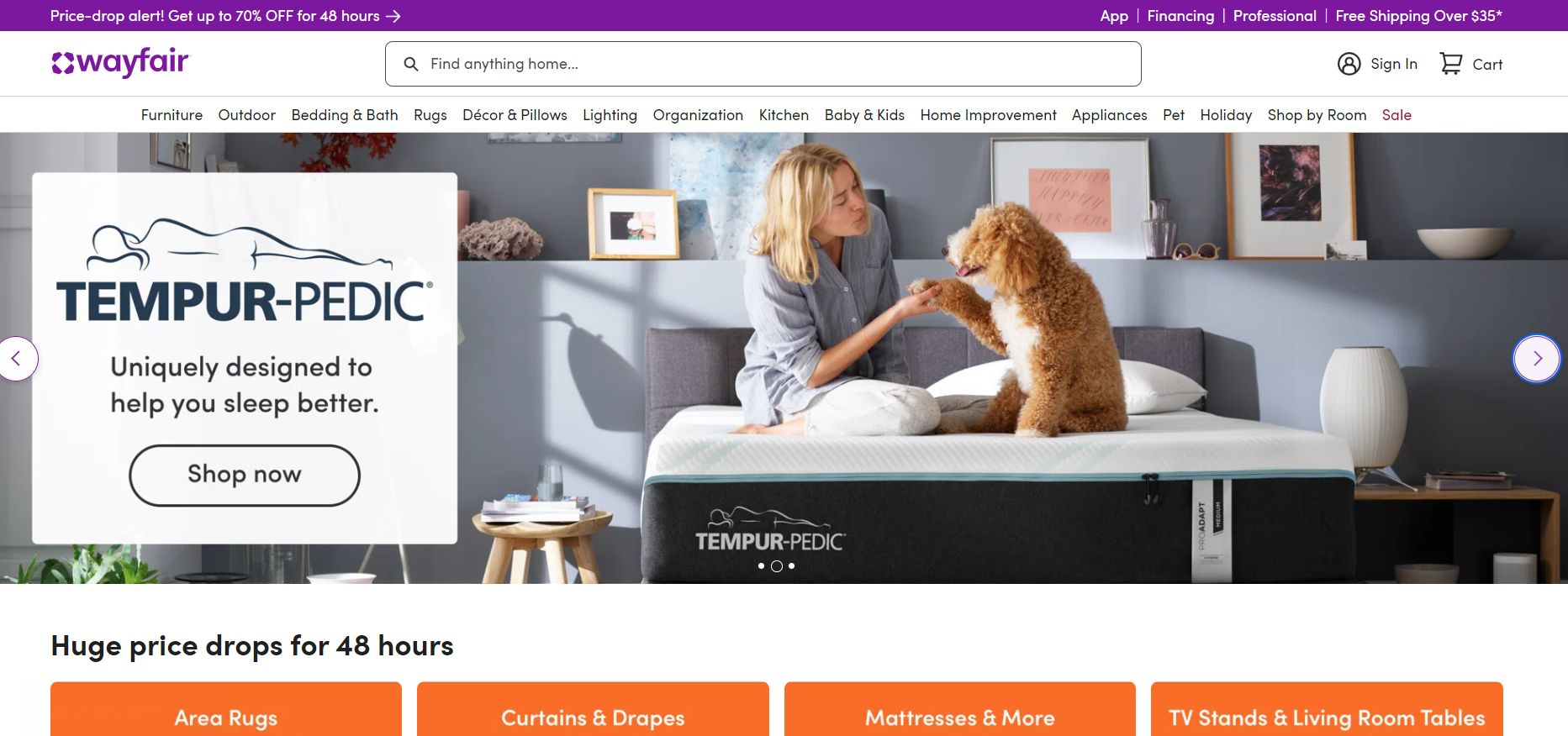
Wayfair specializes in home furnishings, home decor, and home improvement goods, offering an extensive selection of items across various price points. Thus, furniture pieces can range from $50 for small items to over $2,000 for larger pieces.
The platform has over 18 million products to offer, and 20 Million active customers globally. So, it is one of the major Amazon competitors.
However, Amazon wins in terms of overall customer experience, faster shipping, and a wider product range.
On the other hand, Wayfair’s strength lies in its focus on home goods, offering a more curated and specialized shopping experience compared to Amazon’s broader approach.
💡 Tip: Read about Wayfair Dropshipping: Is This The Ultimate Dropshipping Supplier?
2. Etsy
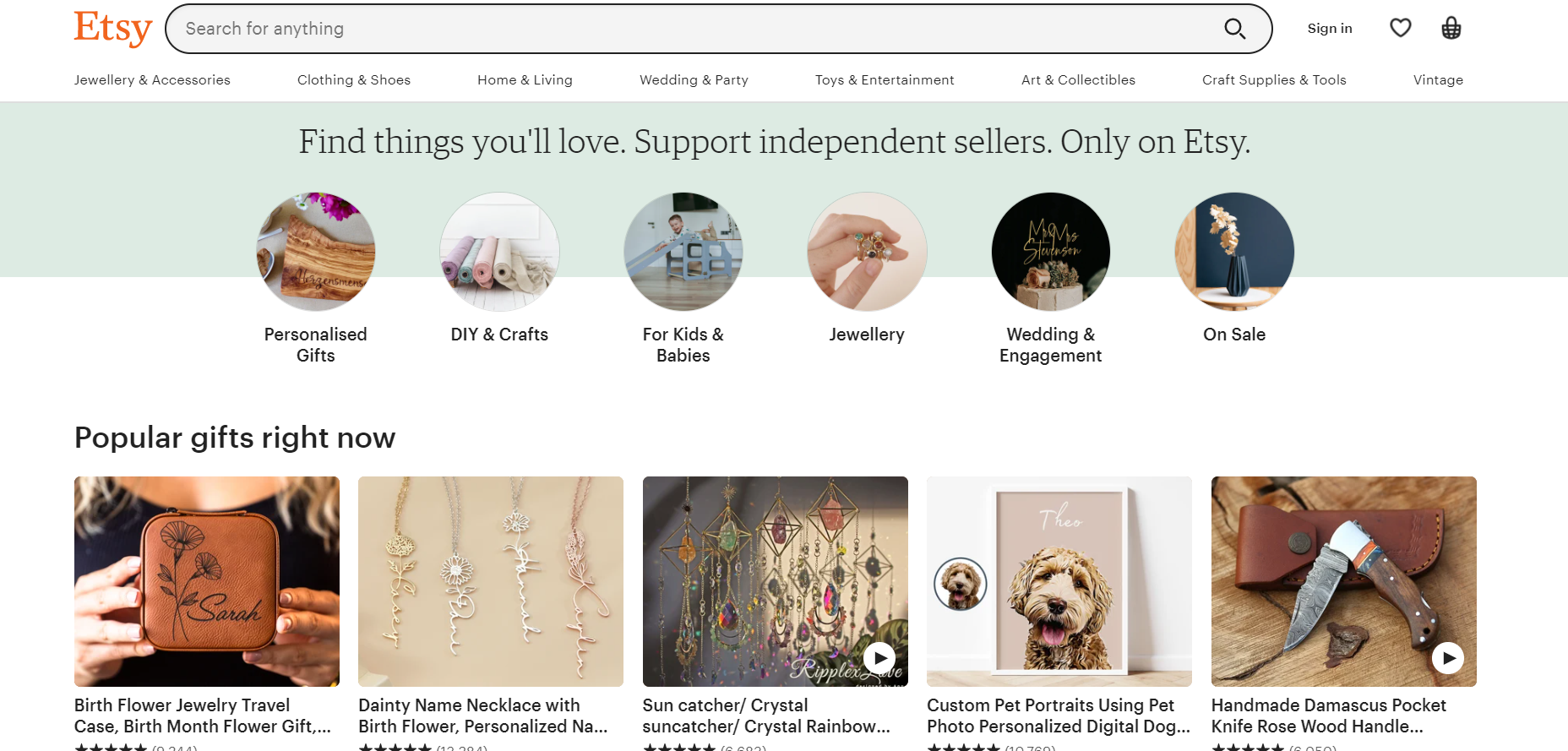
Etsy is a marketplace for handmade, vintage items, and craft supplies. Prices on Etsy vary widely, with unique handmade items often carrying higher price tags, such as handmade jewelry starting at $20 and vintage furniture at over $500.
Etsy competes with Amazon’s Handmade section. Amazon wins with its larger customer base, more comprehensive shipping options, and advanced seller tools.
However, Etsy stands out for its unique, handcrafted items and strong community of small sellers who offer personalized products.
Furthermore, Etsy is generally cheaper, but Amazon Handmade can help you reach more customers with less effort. Etsy has various listing fees, including an immediate $0.20 per listing fee, while Amazon charges a 15% fee on each sale, which can add up quickly.
Etsy offers over 160 categories for handmade and vintage items, compared to just 14 on Amazon Handmade. However, Etsy’s specialized focus on handmade and vintage goods means your products are more likely to attract interested buyers. Plus, Etsy allows for more customization of your storefront and branded packaging.
Setting up an account on Etsy is easier than on Amazon Handmade, but Amazon provides shipping and order fulfillment services.
In conclusion, Etsy is ideal for beginners, while Amazon Handmade is better for expanding your customer base.
👉 Learn about Etsy Dropshipping – The Ultimate Guide for Beginners.
3. Alibaba

Alibaba operates several platforms, including AliExpress, Taobao, and Tmall, focusing on B2B, B2C, and C2C e-commerce.
They offer a vast range of products, from electronics to apparel, often at wholesale prices.
For instance, electronics can be bought in bulk at prices as low as $5 per unit.
Amazon wins in terms of global reach, logistics, and customer service. However, Alibaba holds strong in China and other Asian markets due to its local expertise and comprehensive ecosystem of services.
Read about Alibaba Dropshipping: A Step-by-Step Guide For Beginners.
4. Rakuten
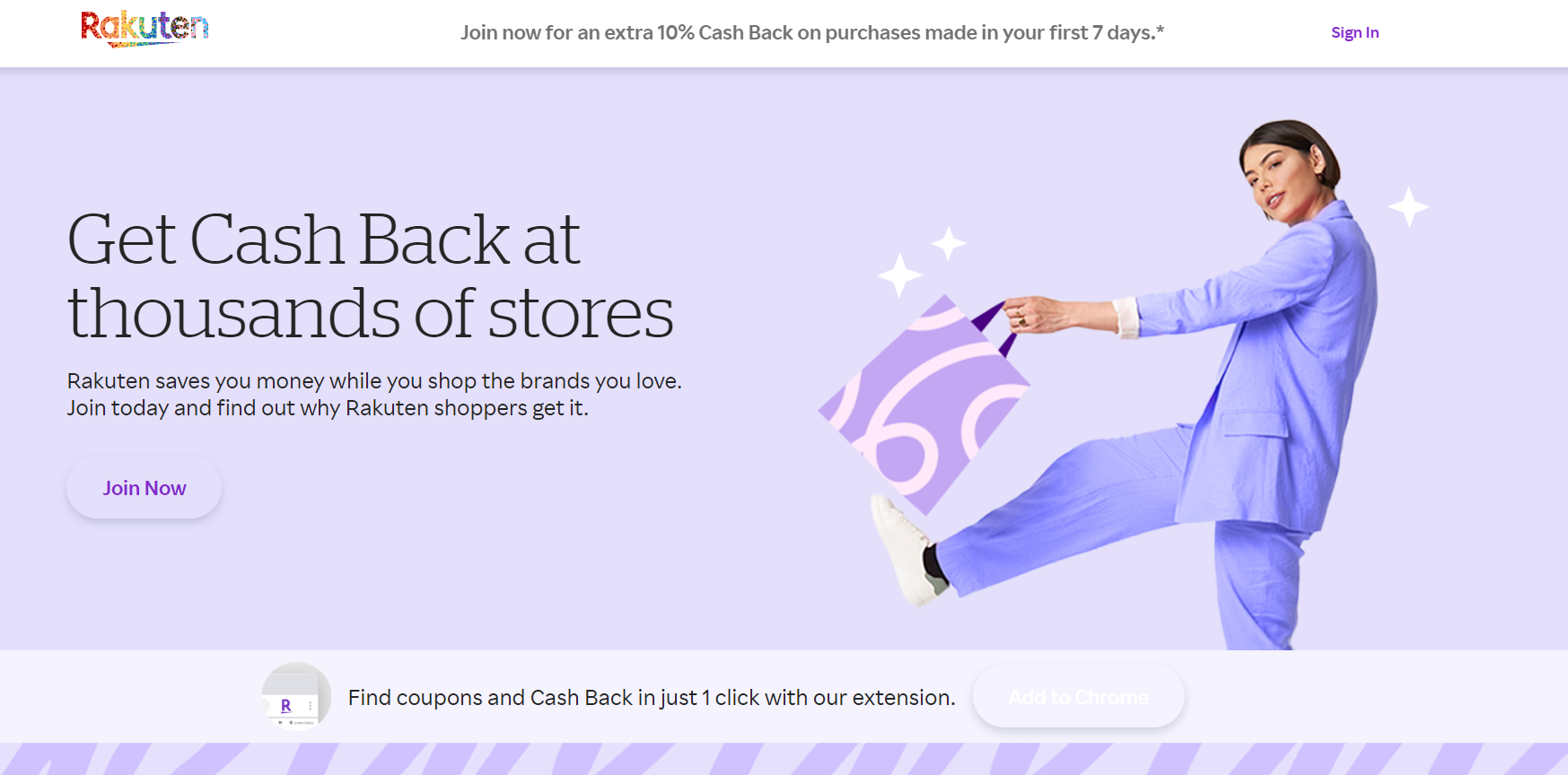
Rakuten offers a wide variety of products and services, including e-commerce, e-books, and financial services.
They are known for their loyalty program, which rewards customers with points that can be redeemed across Rakuten’s ecosystem.
Also, prices on Rakuten can be competitive, with frequent promotions and discounts. For example, electronics can start at $50.
Plus, Amazon wins overall due to its extensive logistics network and broader international presence, but Rakuten has a competitive edge in customer loyalty programs in its home market.
5. Flipkart
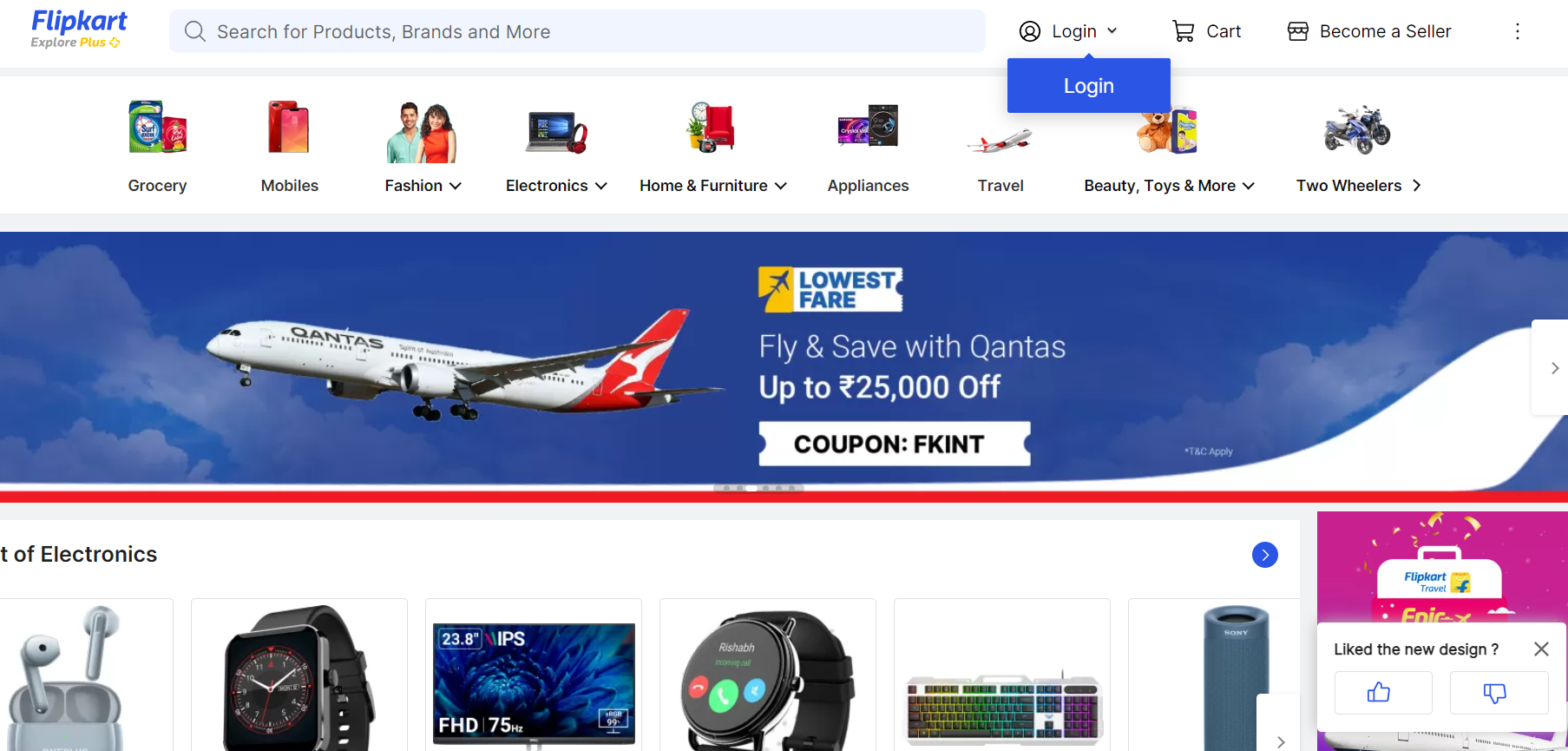
Flipkart is a major player in the Indian e-commerce market, offering a wide range of products from electronics to fashion and home goods.
Their pricing is competitive, often featuring significant discounts and seasonal sales. For instance, smartphones can start at $100 and apparel at $10.
Also, Amazon wins in terms of global reach and comprehensive product offerings, but Flipkart holds a significant share of the Indian market due to its local understanding and strategic partnerships.
Plus, the platform offers fast delivery, a wide range of products, various payment options, etc. But that’s not something that you won’t also get from Amazon as well.
6. Walmart
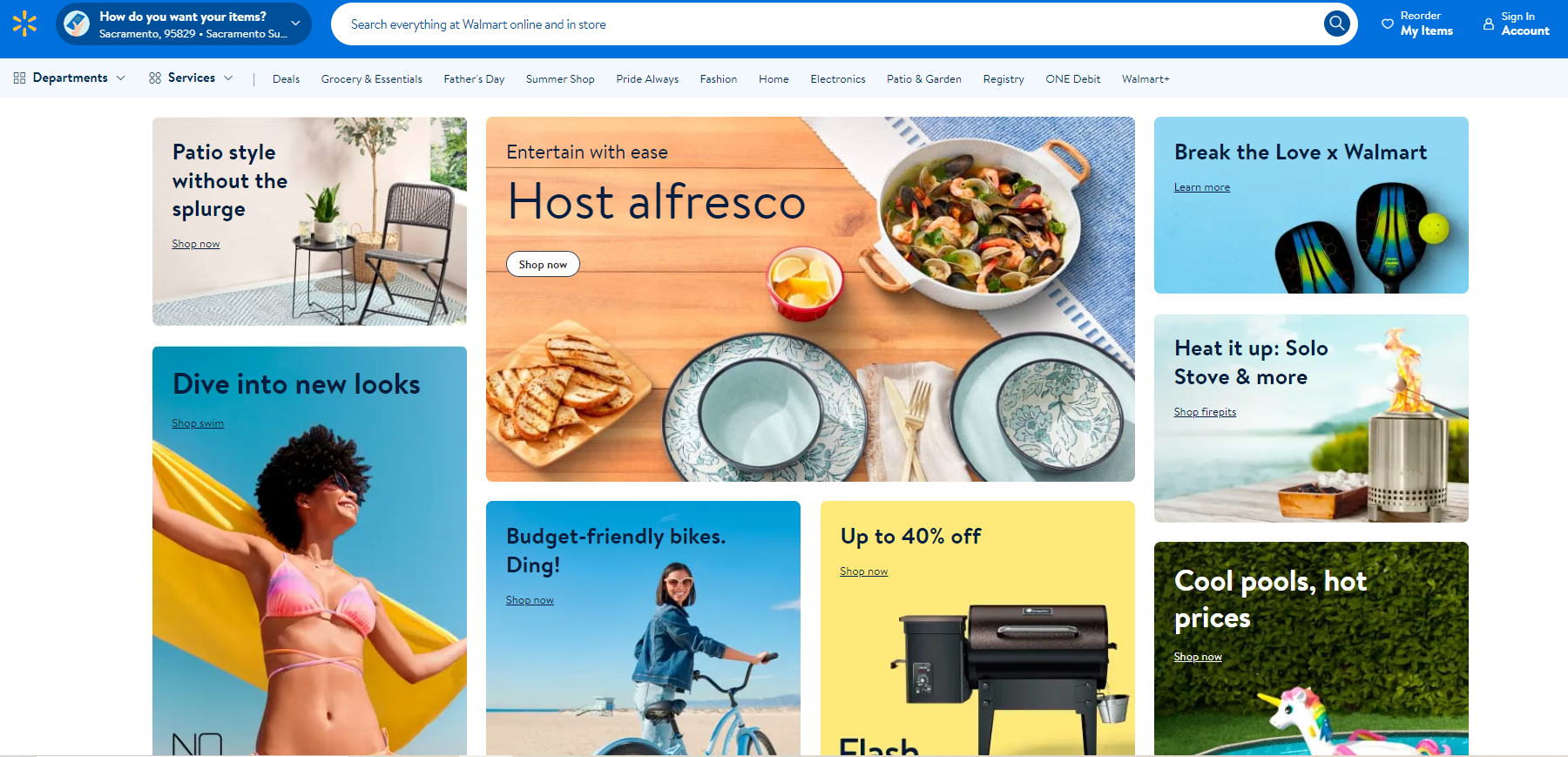
Walmart operates a vast network of physical stores and a growing online presence. So, it is one of the top Amazon competitors.
They offer a wide range of products, including groceries, electronics, apparel, and home goods, often at low prices. Walmart’s pricing is highly competitive, with frequent rollbacks and promotions. For instance, groceries can start as low as $1.
Also, Amazon wins in the online space with its superior logistics and technology infrastructure. However, Walmart excels in brick-and-mortar retail and is rapidly improving its online capabilities to compete more effectively with Amazon.
Moreover, keep in mind that the onboarding process to sell on Walmart is way longer than Amazon. For Amazon, it is up to 48 hours. On the other hand, for Walmart, it can take up to 2 weeks.
7. Target

Target offers a curated selection of trendy merchandise at affordable prices, both in-store and online. They compete with Amazon by providing exclusive brand partnerships and a strong in-store experience.
Target’s pricing is competitive, with items like home decor starting at $20 and clothing at $10. Amazon wins in online retail with faster shipping and a broader product range.
Furthermore, Target stands out for its unique in-store shopping experience, stylish merchandise, and exclusive brands that attract a loyal customer base.
8. LightInTheBox
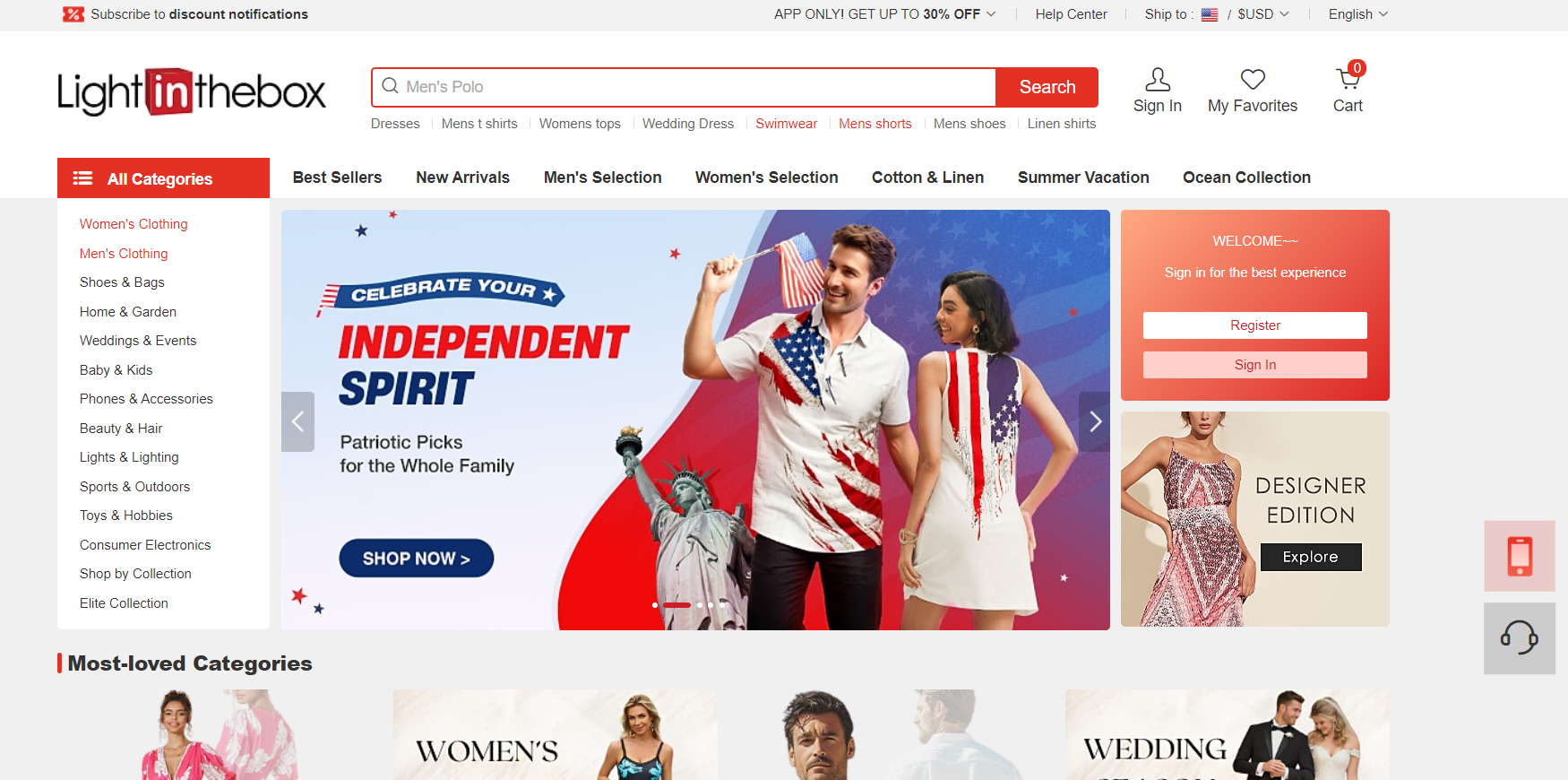
LightInTheBox offers a wide range of products from apparel to electronics, often at discounted prices. Their pricing is generally lower than many Western retailers, with items like dresses starting at $20 and gadgets at $10.
LightInTheBox competes with Amazon primarily in the online retail space by targeting consumers looking for affordable options and bulk purchases directly from manufacturers.
However, Amazon wins in terms of faster delivery, broader product range, and more robust customer service infrastructure. For instance, Amazon’s Prime membership, which includes free two-day shipping and other perks, enhances its appeal significantly.
9. Overstock.com
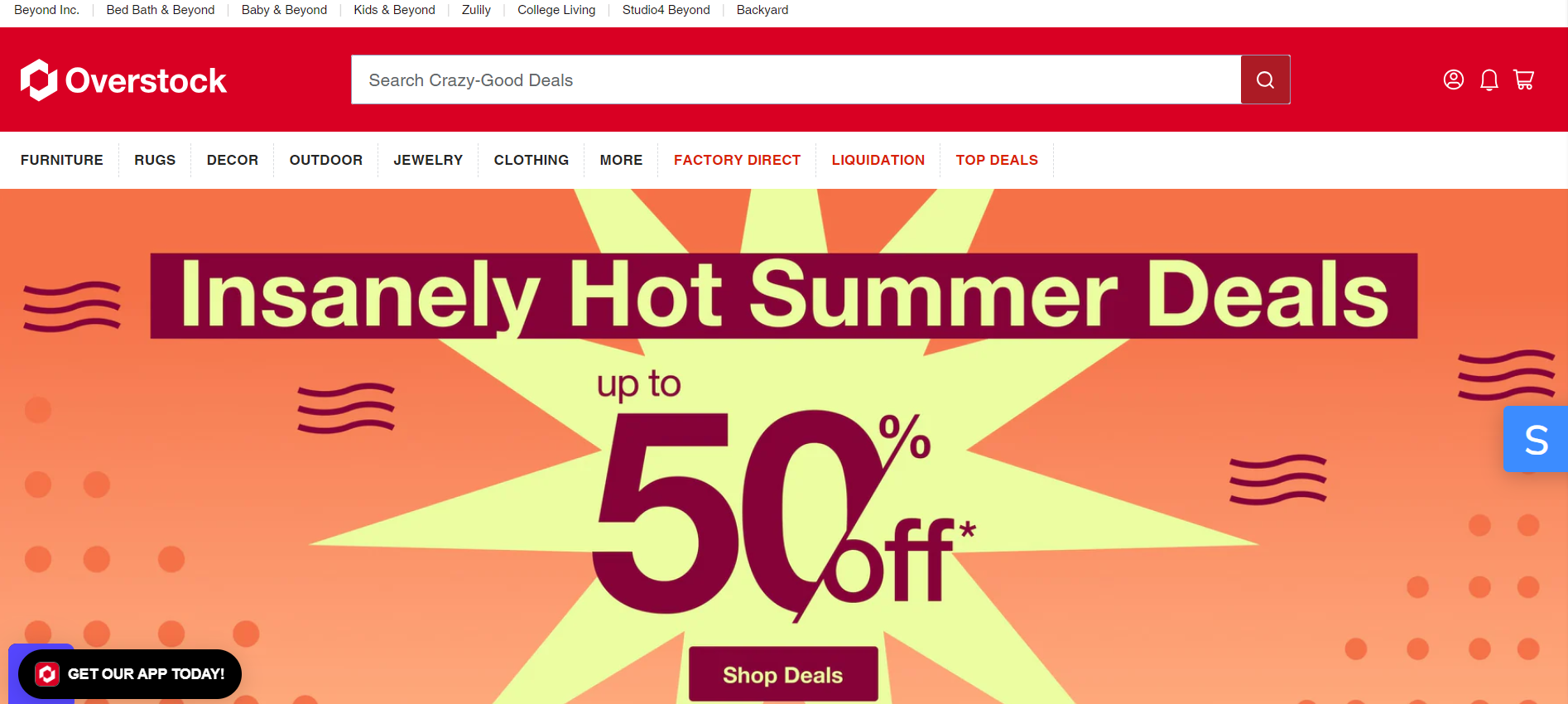
Overstock.com focuses on home goods, furniture, bedding, and decor, offering frequent sales and discounts. Their price range varies widely, with budget-friendly options like lamps starting at $30 and high-end furniture pieces costing over $1,000.
So, Overstock competes with Amazon in the home goods and furniture market. While Overstock offers competitive prices and frequent sales, Amazon wins due to its wider selection, better shipping options, and comprehensive customer service.
10. JD.com
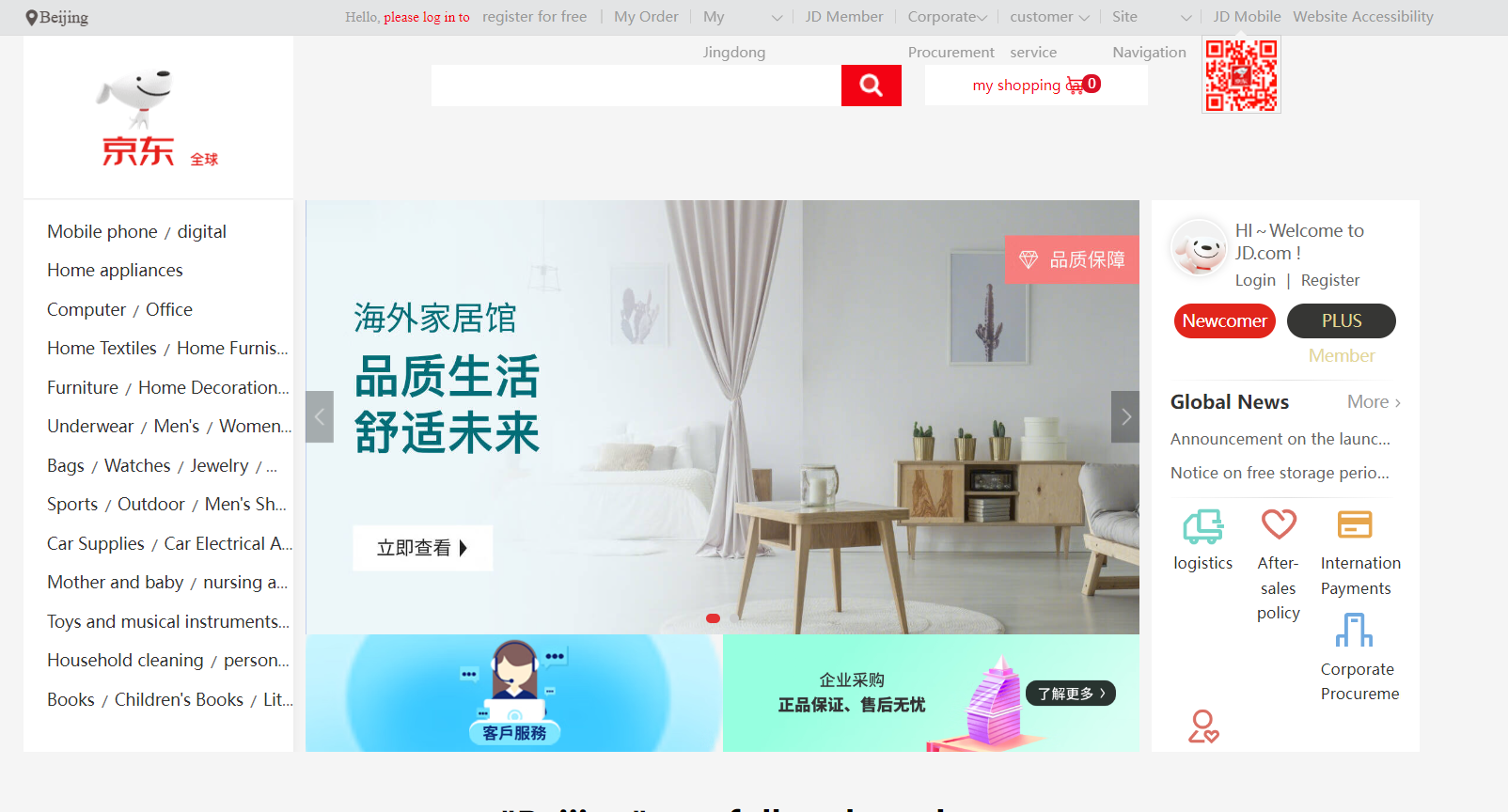
So, this one is also among the top Amazon competitors. JD.com is one of China’s largest e-commerce companies, offering a vast range of products such as electronics, clothing, and home goods.
Hence, the platform is known for its robust logistics network and same-day or next-day delivery in many Chinese cities.
Their pricing is competitive, with items like smartphones starting at around $100. Amazon wins globally due to its broader international reach and more diverse product offerings.
However, JD.com holds a strong position in China with its fast delivery network and local market expertise. Also, it brings its exceptional logistics capabilities and high customer trust in product authenticity.
Subscription-Based Amazon Competitors
1. Disney+

Disney+ provides a subscription-based streaming service with a vast library of Disney, Pixar, Marvel, Star Wars, and National Geographic content. Their pricing ranges from $9.99 per month or $19.99 per month, often bundled with other services like Hulu and ESPN+.
Disney+ competes with Amazon Prime Video by offering exclusive, family-friendly content. Amazon wins in terms of content breadth and additional benefits like free shipping with Prime membership.
However, Disney+ excels with its exclusive content and dedicated fan base, making it a formidable competitor in the streaming space.
2. Netflix

Netflix offers a wide range of TV shows, movies, and original content through a subscription-based streaming service. Their pricing tiers range from $6.99 to $22.99 a month.
Netflix competes with Amazon Prime Video by continuously expanding its library of original content and providing a user-friendly interface.
Amazon wins with its additional Prime benefits and diverse content offerings. Yet, Netflix remains one of the top Amazon competitors due to its vast library of original content and innovative approach to content creation.
3. Spotify
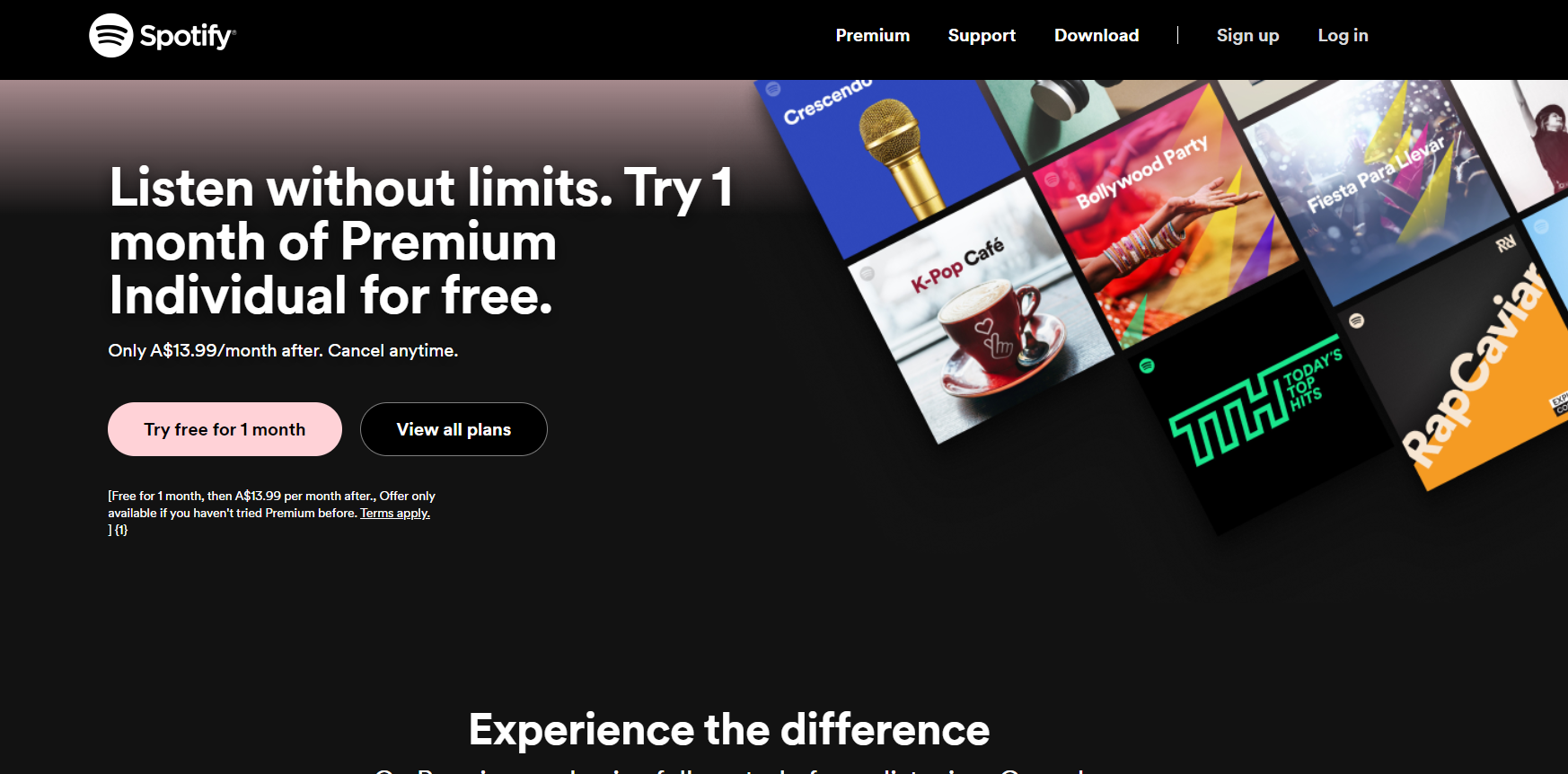
Spotify is a music streaming service that offers access to a vast library of songs, podcasts, and audiobooks.
Their pricing includes a free ad-supported tier and Premium subscriptions starting at $6.99 per month up to $23.99 per month.
Spotify competes with Amazon Music by focusing on music discovery and personalized playlists. Amazon wins with its integration into the broader Amazon ecosystem and additional Prime benefits.
However, Spotify excels in music discovery, user experience, and its extensive podcast library.
👉 Learn How To Sell On Spotify Today: Step-by-Step Guide + Top Products.
Web Service Amazon Competitors
1. Microsoft Azure
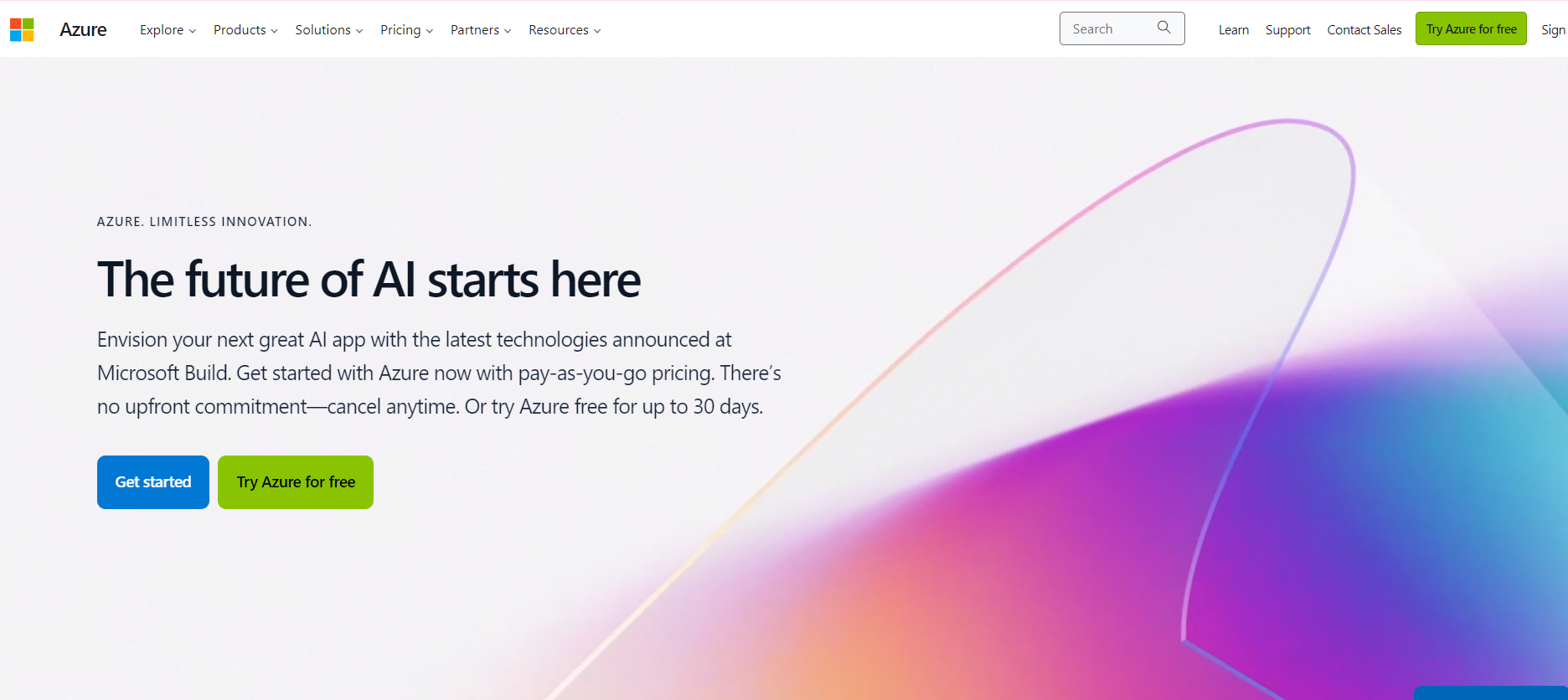
Microsoft Azure offers a comprehensive suite of cloud computing services for building, testing, deploying, and managing applications.
Their pricing is competitive, with pay-as-you-go models and enterprise subscription plans for which you need to request a quote. Azure competes with Amazon Web Services (AWS) by providing strong integration with Microsoft products and services.
Hence, Amazon wins with AWS’s market leadership, broader range of services, and extensive infrastructure. Azure remains one of the strongest Amazon competitors with its enterprise-grade solutions and seamless integration with Microsoft’s software ecosystem.
2. Google Cloud Platform

Google Cloud Platform provides a suite of cloud computing services, leveraging the same infrastructure used internally by Google. Their pricing is competitive, often offering pay-as-you-go and discounted plans for committed use.
Google Cloud competes with AWS by excelling in data analytics and machine learning capabilities. Amazon wins in market share and the breadth of services offered.
However, Google Cloud stands out for its advanced data analytics tools and integration with other Google services.
3. Salesforce
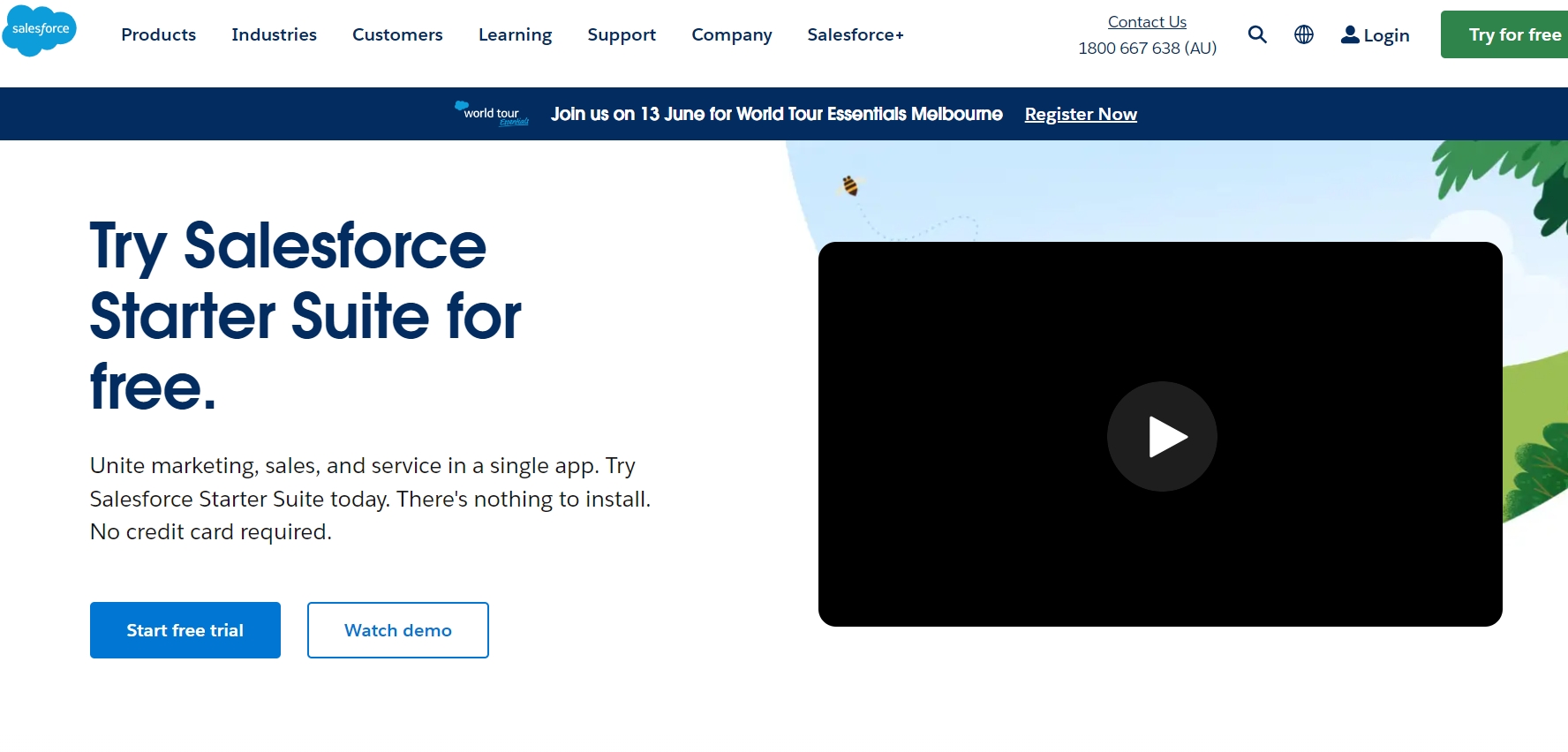
Salesforce is renowned for its customer relationship management (CRM) services and a wide array of cloud-based business applications. Their pricing is tiered, with various plans catering to businesses of different sizes, starting at $35 per user per month.
Salesforce competes with AWS in the cloud service market by focusing on CRM solutions and a comprehensive business ecosystem.
Amazon wins in terms of service variety and infrastructure. Salesforce stands out with its strong CRM capabilities and extensive business app ecosystem.
Amazon Competitors For Third-Party Seller Services
1. eBay
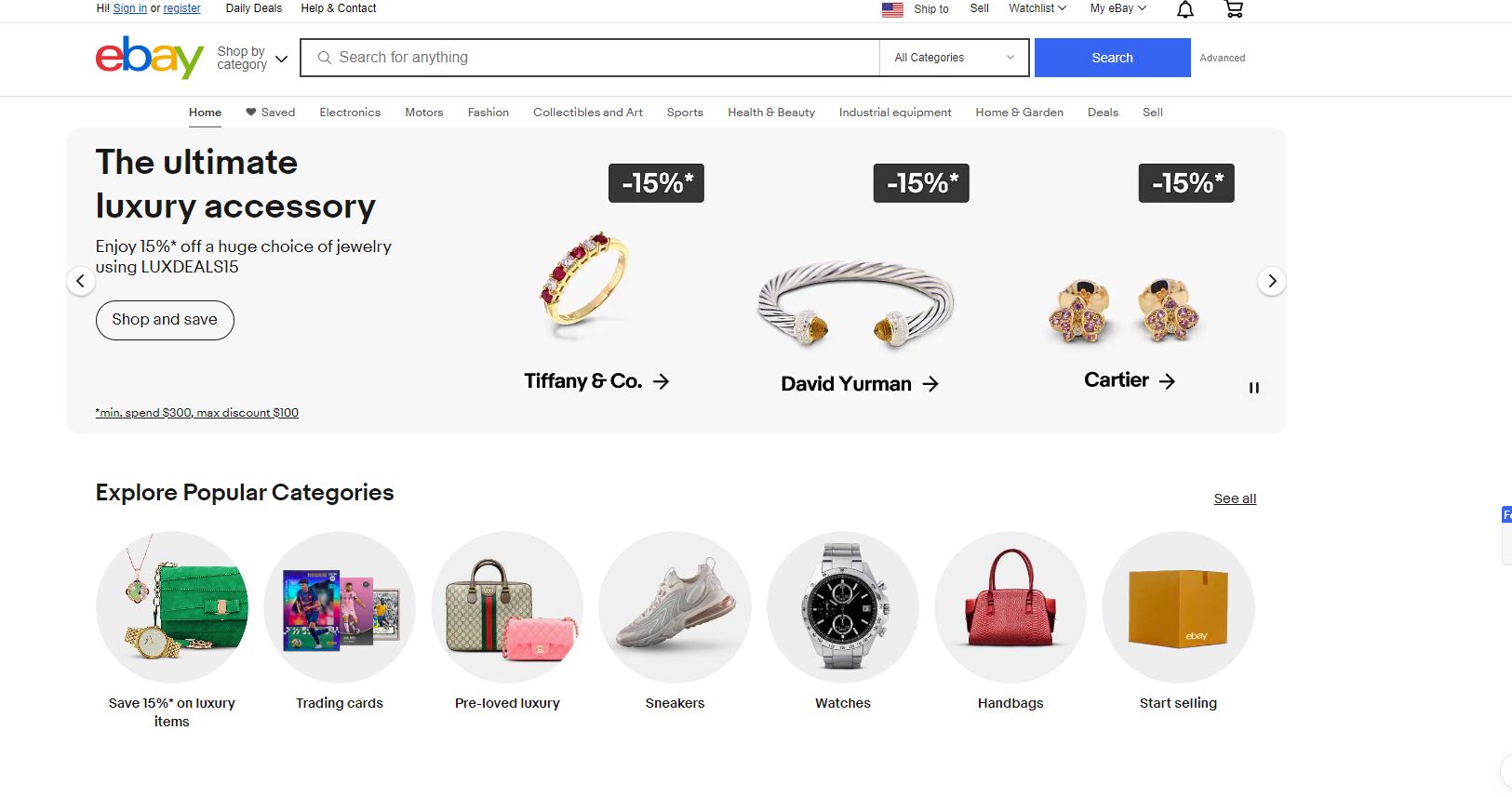
eBay is an online auction and shopping website where people buy and sell a wide variety of goods and services worldwide. Their pricing includes listing fees and final value fees for sellers, typically 10-15% of the selling price.
eBay competes with Amazon in the third-party seller services market by offering auction-style sales and a platform for unique and used items.
Amazon wins with its seamless shopping experience, logistics, and customer service. eBay excels in auction-style sales and provides a platform for unique, often second-hand items.
Also, selling on eBay is cheaper than selling on Amazon. Thus, eBay offers 250 free listings, which Amazon charges several fees like referral fees, fixed losing fees, subscription fees, etc.
eBay has all these fees as well, but are lesser than the ones Amazon offers. Plus, eBay subscription plans start at $7.95 monthly, while Amazon starts at $39.99/month. Also, sale fees are around 10-15%, while Amazon charges 15%.
However, Amazon is bigger than eBay when it comes to market size, but what about the number of users? In 2023, Amazon has a massive customer base of 310 million users, while eBay has 135 million active users worldwide.
Learn about Dropshipping On eBay in 2024 – Pros, Cons & Tips for Beginners.
2. Shopify

Shopify is a commerce platform that allows anyone to set up an online store and sell their products. Their pricing includes various subscription plans starting from $32 per month, up to $399 per month.
Shopify competes with Amazon in third-party seller services by offering a customizable platform for small businesses.
Amazon wins with its vast customer base and logistics network. However, Shopify stands out with its easy-to-use platform, extensive customization options, and supportive ecosystem for small businesses.
Also, Shopify offers more integrations with tools, better store analytics, better SEO and marketing, more payment options, etc. Plus, their pricing structure is more straightforward.
👉 Learn everything about Shopify vs Amazon FBA [Expert Advice].
3. Bonanza

Bonanza is an online marketplace that allows sellers to list a variety of products. Their pricing includes listing fees and commission rates typically around 3.5%.
Bonanza competes with Amazon in third-party seller services by offering a seller-friendly platform and unique product listings. Also, their membership costs are cheaper, starting at $25/month. On the other hand, Amazon costs start at $39.99/month.
Amazon wins with its customer base and infrastructure. Bonanza is notable for its seller-friendly policies and diverse product offerings.
4. Mercari
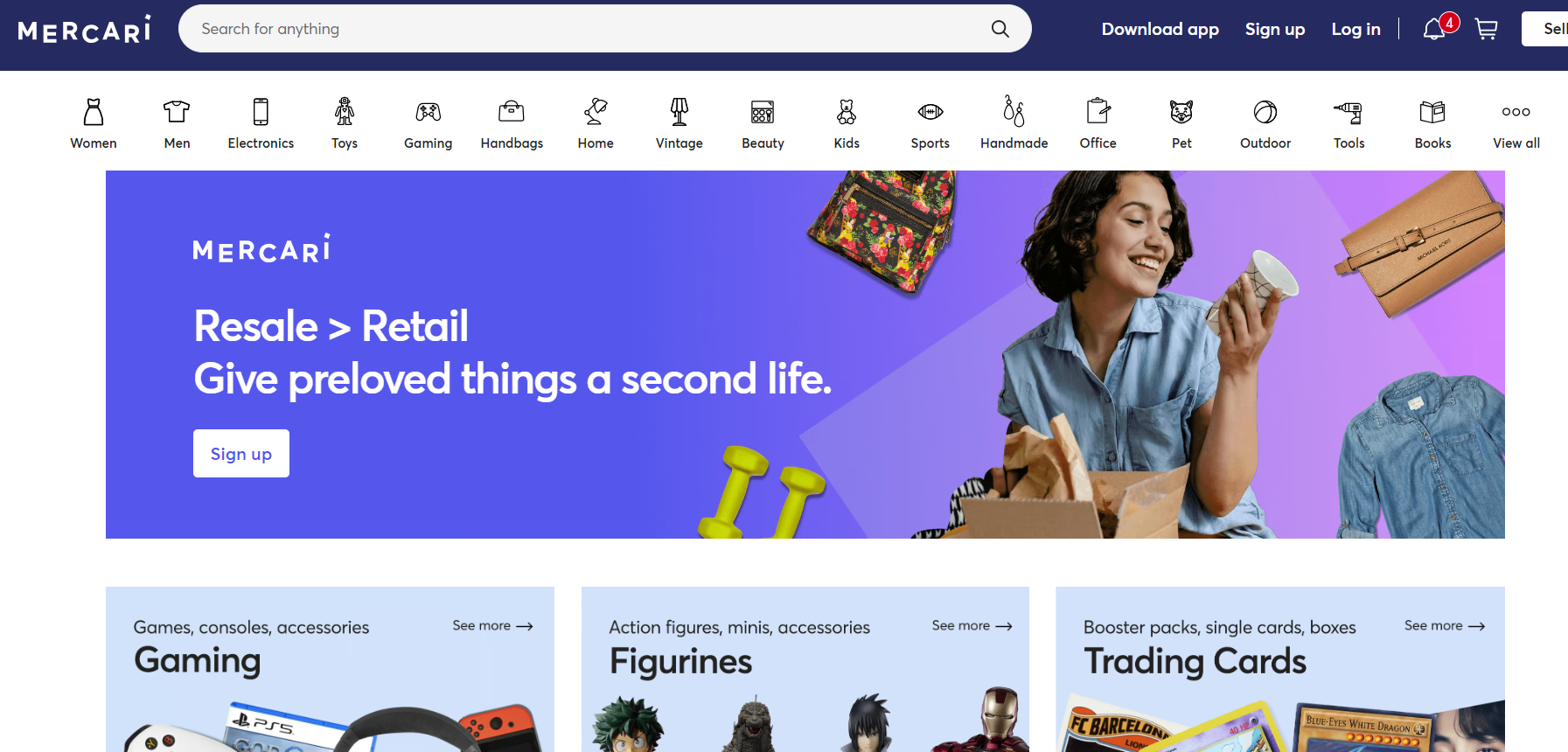
Mercari is a mobile-first marketplace for buying and selling new and used items. Their pricing includes a flat 10% selling fee, which is less since Amazon charges sellers 15% of the product selling price.
So, Mercari competes with Amazon in the peer-to-peer selling market by providing an easy-to-use mobile app and focusing on used items.
Amazon wins with its broader reach and logistics. Mercari excels in its user-friendly mobile app and ease of use for selling used items, making it popular among casual sellers. Thus, it is one of the serious Amazon competitors.
Amazon Pros & Cons
Next, I will list the pros and cons of Amazon compared to Amazon’s competitors.
Pros of Amazon
✅ Expansive International Presence
Amazon’s extensive international presence makes it accessible to a vast customer base worldwide.
For instance, platforms like Alibaba and Flipkart have strong local presence but less global reach, giving Amazon an edge in reaching a more diverse and extensive audience.
✅ Variety Across Categories
Amazon offers a wide variety of products across numerous categories, providing a one-stop shop for customers.
In comparison, platforms like Wayfair and Etsy have more specialized selections, which can limit their customer base to niche markets.
✅ Fast and Reliable Delivery
Amazon Prime offers fast and reliable shipping options, including same-day and two-day delivery.
For example, competitors like JD.com have strong logistics networks locally, but Amazon’s international logistics are superior, making it a preferred choice for global customers.
✅ Robust Support and Easy Returns
Amazon is known for its robust customer service and easy return policies. While many competitors offer good service, they may not match Amazon’s efficiency and customer-friendly policies.
This advantage makes Amazon a trusted platform for consumers.
✅ Comprehensive Membership Perks
Amazon Prime membership includes benefits like Prime Video, Prime Music, and free shipping.
In contrast, competitors like Netflix and Spotify offer specific services but lack the comprehensive membership benefits of Amazon Prime, making Amazon Prime a more attractive overall package.
Cons of Amazon
❌ Higher Fees for Sellers: Increased Costs
Amazon charges various fees, including referral fees, fulfillment fees, and subscription fees, which can add up and reduce profitability for sellers.
For instance, platforms like eBay and Mercari have lower selling fees, making them more attractive to small sellers looking to maximize their margins.
❌ High Competition
High competition on Amazon can make it difficult for new sellers to stand out.
In comparison, platforms like Bonanza and Shopify offer more opportunities for niche products and personalized storefronts, allowing sellers to carve out unique market spaces.
❌ Less Specialized Focus
Amazon’s broad product range can result in less specialized and curated experiences for niche markets.
For example, platforms like Wayfair for home goods and Etsy for handmade items provide more tailored shopping experiences, attracting customers looking for specific types of products.
❌ Lower Profit Margins
High fees and competitive pricing on Amazon can lead to lower profit margins for sellers.
In contrast, platforms like Etsy, with lower listing fees, can offer better margins for specific product categories, making them more appealing to certain types of sellers.
❌ Limited Brand Control and Customization
Amazon provides limited options for branding and customization on its platform.
For instance, Shopify offers extensive customization options for branding and storefront design, allowing sellers to create unique and personalized shopping experiences that can attract and retain customers.
❌ Complex Onboarding for Sellers
The process of becoming a seller on Amazon can be complex and time-consuming, potentially deterring new sellers.
In comparison, platforms like Etsy and Mercari offer simpler and quicker onboarding processes, making it easier for new sellers to start their online businesses.
Best Amazon Tools To Discover Competitors
Here’s how I personally discover my Amazon competitors, based on my specific business niche.
So, I will share with you the top tools I’ve used for competitor analysis.
Jungle Scout
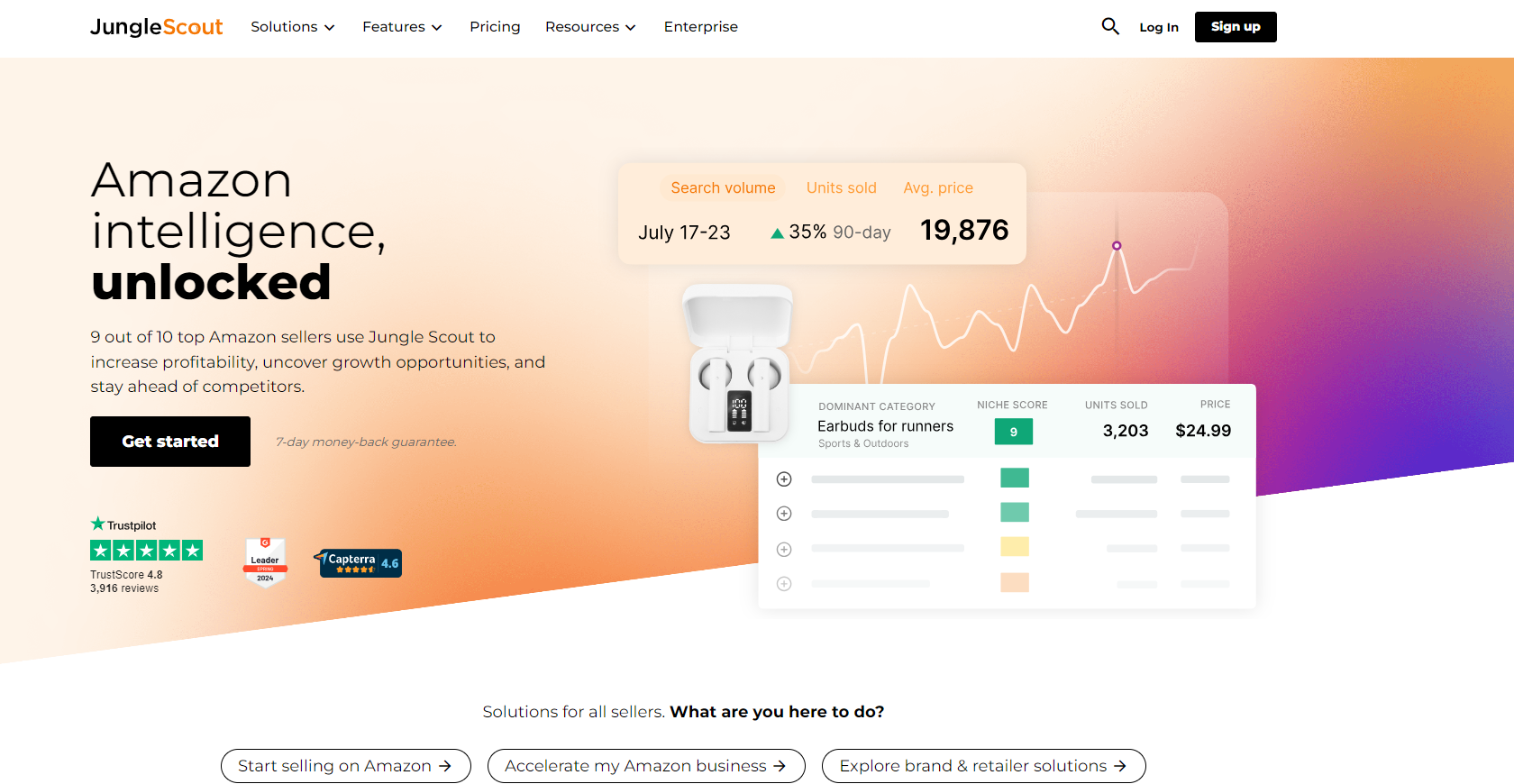
Jungle Scout is renowned for its comprehensive suite of tools designed to assist Amazon sellers in every aspect of their business.
When it comes to competitor analysis, Jungle Scout offers a range of features that provide deep insights into your market rivals.
The Product Database and Product Tracker allow you to monitor your competitors’ inventory, sales volume, and revenue, helping you identify the best-selling products and potential gaps in the market.
Additionally, the Keyword Scout tool enables you to uncover the keywords your competitors are ranking for, providing you with strategic information to optimize your own listings.
Jungle Scout’s Opportunity Finder is another valuable feature for competitor analysis. It helps you discover profitable niches by analyzing market trends and competition levels.
This tool offers detailed metrics such as average monthly sales, average price, and the number of competing products, allowing you to make data-driven decisions.
👉 Read my comparison of Jungle Scout vs Helium 10: Full Showdown for Amazon Sellers.
Helium 10
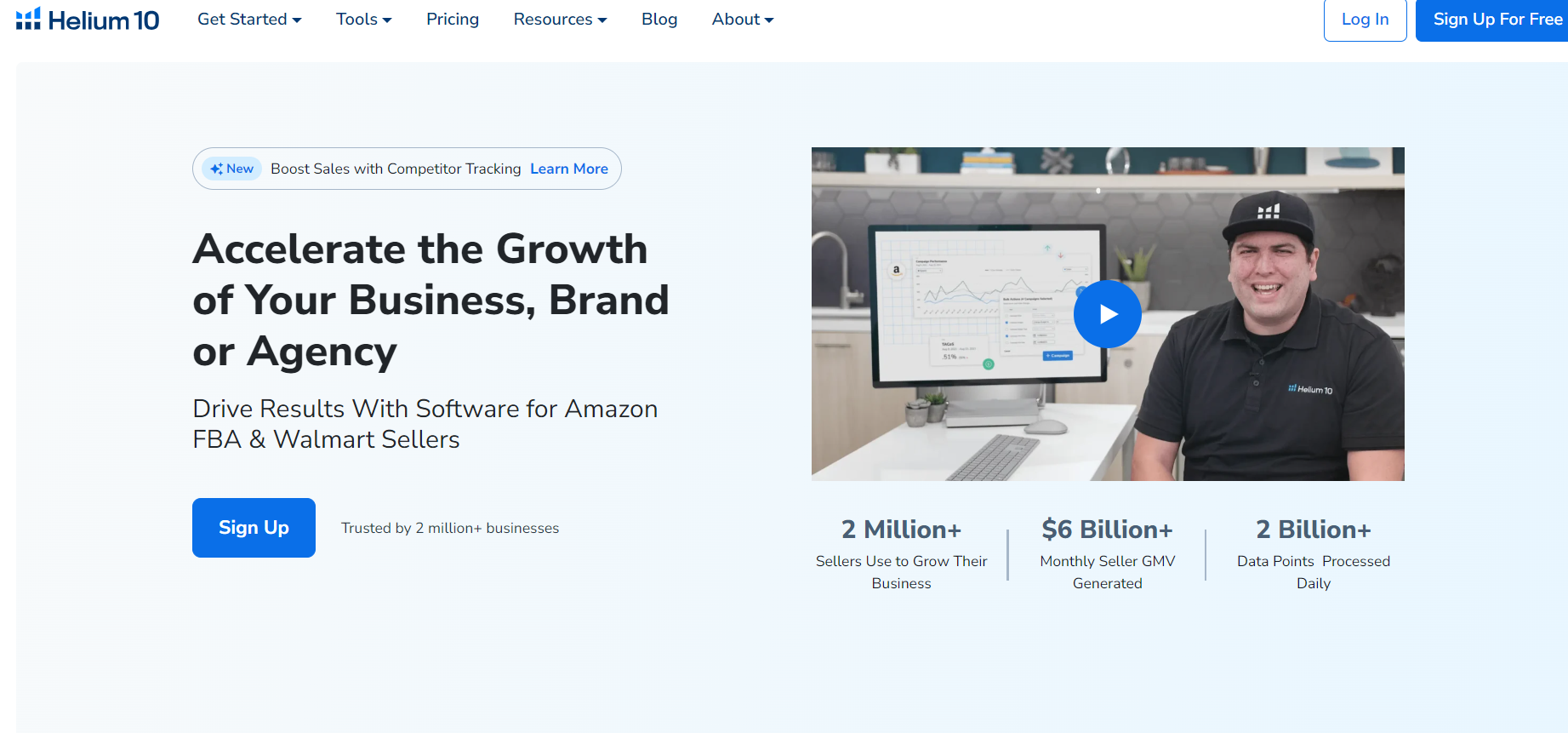
Helium 10 is another powerful tool that excels in competitor analysis for Amazon sellers. Its extensive suite of features is designed to provide you with a competitive edge.
The Black Box tool, for instance, allows you to conduct deep product research by filtering through millions of products based on various criteria such as sales volume, review count, and competition level. This helps you identify potential competitors and understand their market performance.
The Xray tool in Helium 10 provides a detailed overview of a product’s sales data, including revenue estimates, sales trends, and historical performance. This feature is crucial for analyzing your competitors’ success and identifying opportunities to improve your own product listings.
Furthermore, Helium 10’s Cerebro tool offers advanced keyword research by revealing the keywords your competitors are ranking for, along with their search volume and relevance.
This information enables you to optimize your listings and ad campaigns effectively.
Additionally, Helium 10’s Competitor Keyword Tracking tool allows you to monitor your competitors’ keyword rankings over time. This helps you understand their SEO strategies and adjust your own tactics accordingly.
Viral Launch
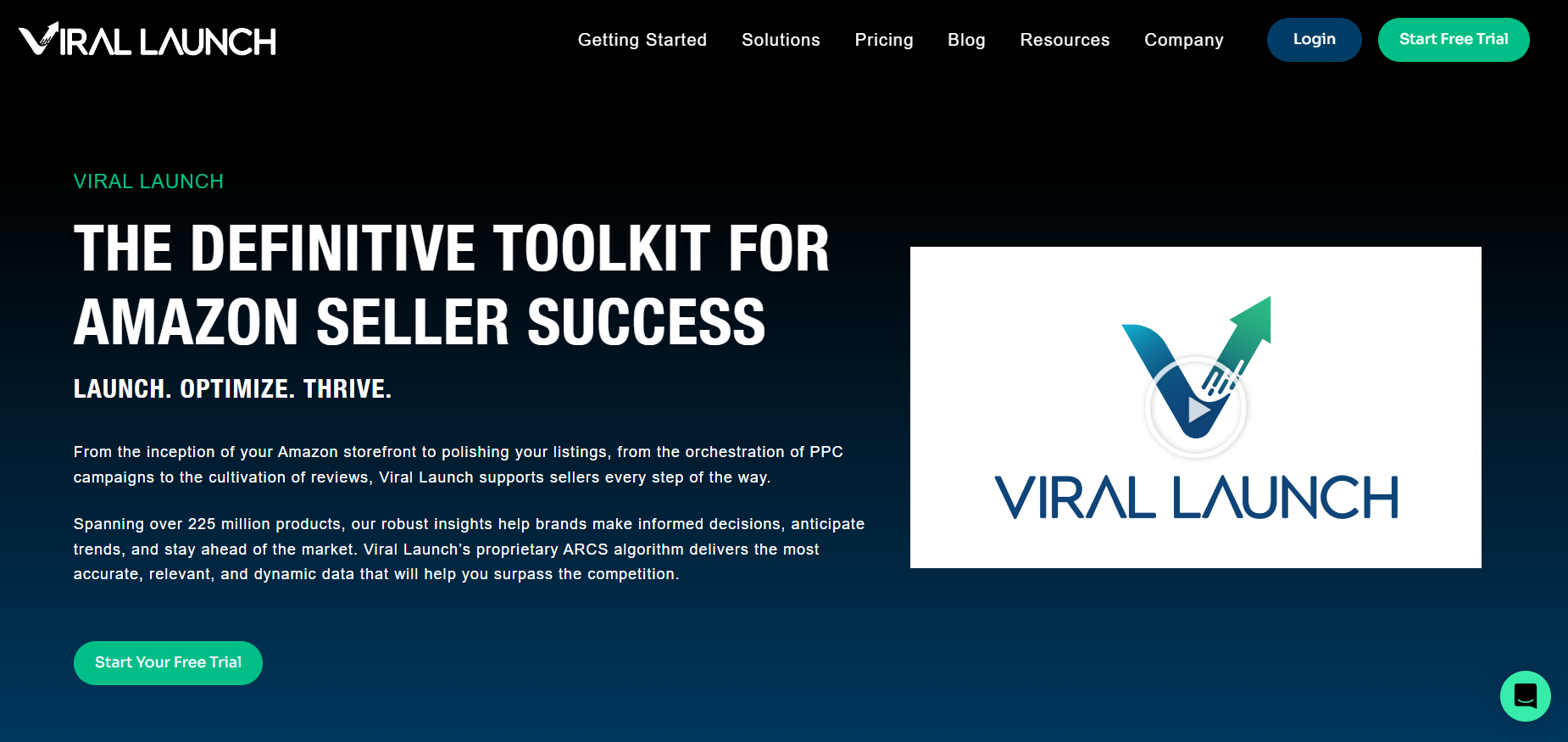
Viral Launch offers market intelligence, product discovery, keyword research, competitor intelligence, and listing optimization.
Thus, this comprehensive tool provides detailed insights into market trends, allowing you to understand your competitors’ strategies and make informed decisions.
With accurate sales estimates and robust competitor analysis, Viral Launch is ideal for sellers looking to identify profitable niches and stay ahead in the competitive market.
AMZScout
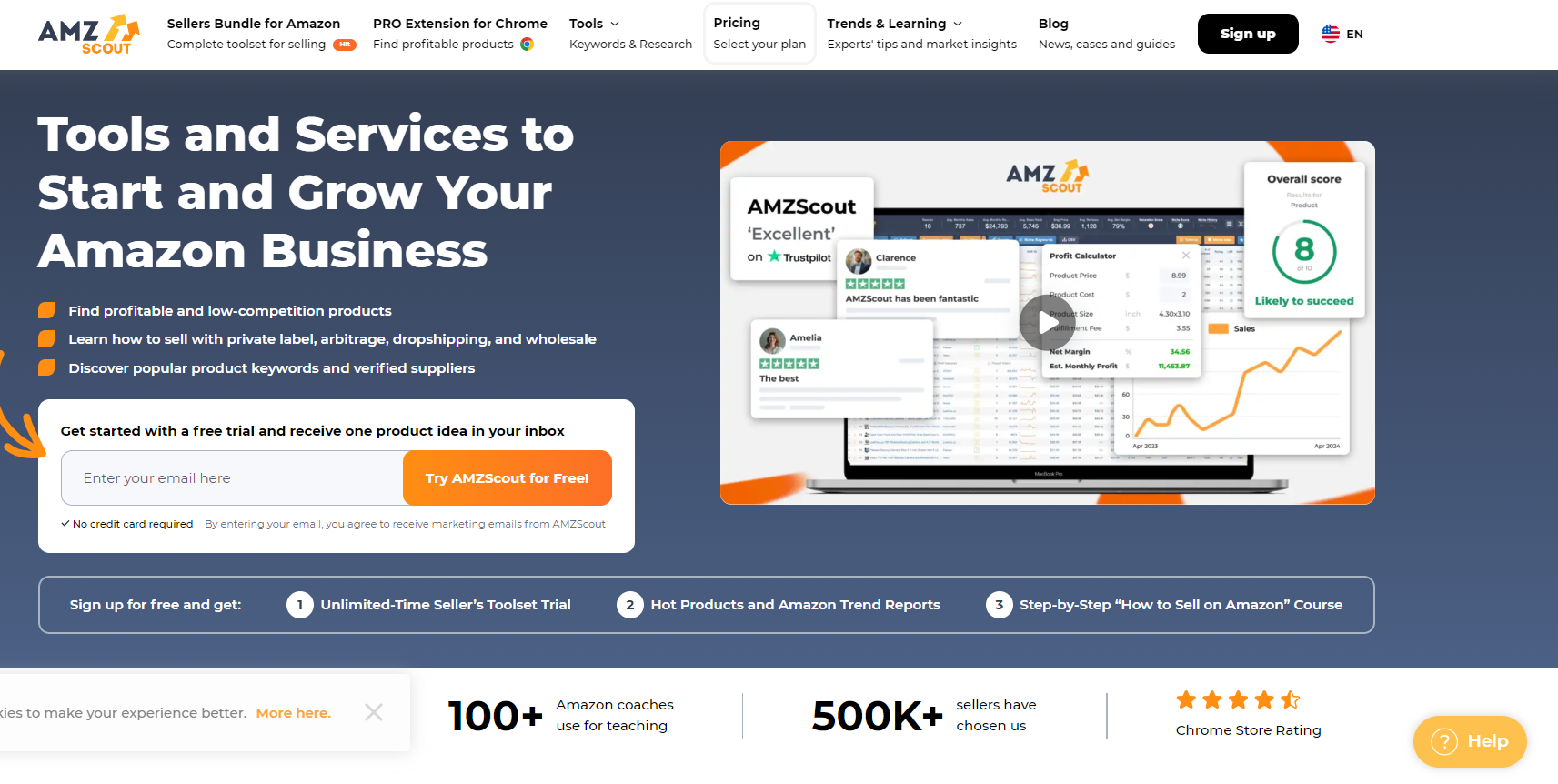
AMZScout is equipped with a product tracker, keyword research tools, a sales estimator, competitor analysis features, and a profit calculator.
Hence, its easy-to-use interface and real-time data tracking make it a valuable asset for both beginners and experienced sellers.
Also, AMZScout streamlines product research and effectively tracks competitors, offering a straightforward way to enhance your Amazon business strategies.


Conclusion
Getting to know Amazon’s competitors is crucial if you are looking to thrive in the e-commerce space.
That’s why, in this article, I pinpoint the strengths and weaknesses of Amazon compared to 20 of its top rivals, offering a comprehensive overview of the current market.
From the expansive global reach and diverse product range of Amazon to the specialized focus and lower fees of competitors like Etsy and Shopify. However, each platform presents unique opportunities and challenges.
In my opinion, Amazon’s superior logistics and customer service, compared with the lower selling fees and customization options available on other platforms is what makes the battle.
So, before starting, consider what aspects are most important for your business.
Hence, here’s my advice: if global reach and a broad customer base are your priorities, Amazon might be the best choice despite its higher fees and competition.
However, if you value lower costs, niche markets, or customization, exploring platforms like Etsy, Shopify, or Bonanza could be more beneficial.













![The Top 21 3PL Companies Compared [2024 List & Guide]](https://images.weserv.nl/?url=https://prod-dropshipping-s3.s3.fr-par.scw.cloud/2024/03/Frame-3922469.jpg&w=420&q=90&output=webp)